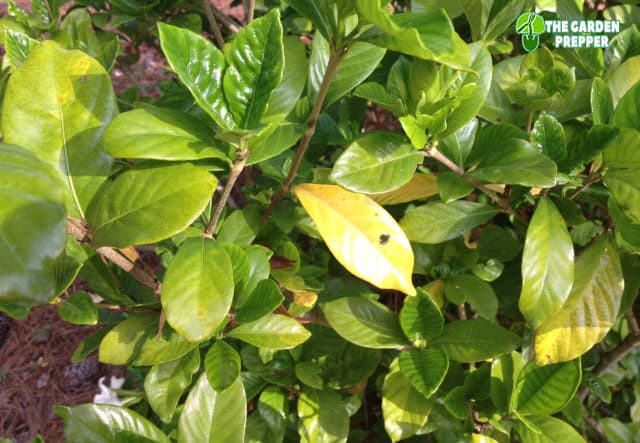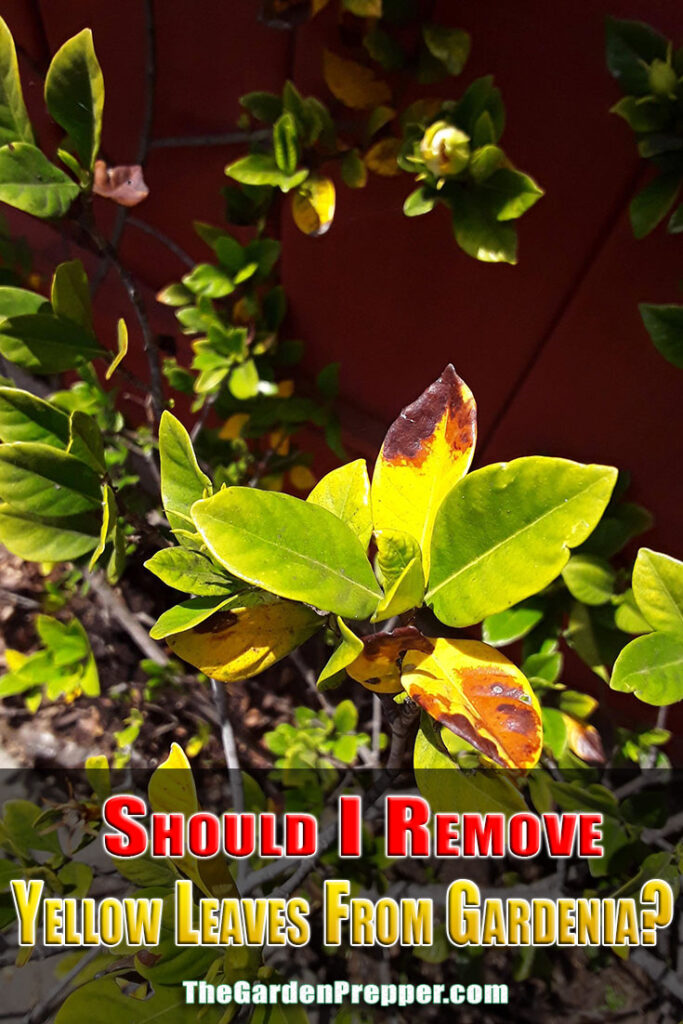Gardenias are amazing plants, known as the prima donnas in the planting world because of their maintenance needs. These plants want everything according to their specific needs, from the amount of water down to the soil pH and fertilization it receives. All the work will be worth it though, as they don creamy white flowers with a fantastic fragrance.
This is why it can be disappointing when you witness your gardenias having yellow leaves. This would have you looking for remedies, asking yourself, ‘should I remove yellow leaves from gardenia?’
Read on to find out why your gardenia has yellow leaves and if it should be removed or not.

Should I Remove Yellow Leaves From Gardenia?
Gardenias are a favorite among gardeners but aren’t for casual novices, being tough to cultivate. There are various reasons why gardenias have yellow leaves, which I will explain in the next section. That said, it is possible to remove the yellowing leaves from the plant, either as a remedy or for aesthetics.
You will just need to make sure that you prune and cut away the yellowing leaves properly to prevent any damage. Here are the steps to follow when removing yellow leaves from your gardenia:
- Slip on your gardening gloves for protection
- Pull yellow leaves away from the gardenia, holding them there. Using your other hand, use sterilized pruning shears or scissors, carefully snipping the leaves at the ends of their petioles, right where they meet the branch. Do NOT damage the branch.
- Dispose of all yellow leaves in a garbage bag, removing them from the area. Don’t drop it near your plant, or any other plant for the matter, in case those leaves have a fungal infection. If you leave it on the ground, the fungus might overwinter in the soil, infecting your plants again during the next growing season.
- If ever the branch is broken or dead, then prune the entire branch if filled with yellow leaves. Cut it back to a thicker and supporting branch or the ground. It’s best to do this right after your flowers faded.
Why Does My Gardenia Have Yellow Leaves?
So, why does my gardenia plant have yellow leaves in the first place? Here are a couple of reasons why:
1. It’s Normal
Seeing yellow leaves on your gardenias doesn’t make it the end of the world! It might not even be a problem, but part of your gardenia’s growth and lifespan.
During the spring, it’s normal to see some yellowing leaves, as this is part of the process of older foliage. They would die off to give way for new leaves to grow.
However, during the other seasons, it isn’t normal to see yellow leaves on gardenias. If ever you see yellow leaves during seasons other than spring, you’ll need to check what you aren’t giving your plant enough of (or give too much of).
2. Poor Provision of Maintenance Needs
Gardenias require 1 inch of water weekly and their soil should stay damp, not soggy. Overwatering or underwatering can cause yellow leaves. Poor soil drainage also causes it, along with insufficient light, as the gardenia does love full sun with partial shade to prevent scorched leaves.
The wrong temperature and nutrient deficiencies may also cause yellow leaves. Gardenias thrive best in temperatures between 60-70 degrees F, and anything lower than that causes leaves to turn yellow and drop.
3. Chlorosis
Chlorosis is a condition where your plan is not receiving enough chlorophyll from nutrient deficiencies. This may also be due to poor drainage, root issues, pH levels too high, or all of these causes! As a result, the leaves would start to yellow, resulting in the leaves dropping.
Usually, chlorosis is caused by an iron deficiency, which is why it’s crucial to provide your plant with chelated iron as needed. It may also come from lower magnesium or manganese levels, too!
Read more: What’s The Difference Between Gardenia And Jasmine? Cool Facts You Never Knew!
Preventing Yellow Leaves on Gardenia
Now that you know why your gardenia may have yellow leaves, what can you do to prevent the yellow leaves from appearing again? Follow these helpful tips:
1. Maintain Good Conditions
One of the main reasons for yellow leaves comes from giving your plant too much (or not enough) of something. Here are quick tips to follow when caring for your gardenias:
- Never overwater your gardenias and water them only before the soil dries out, keeping the soil moist. Also, make sure that the soil you use has excellent drainage and pH levels between 5.0 to 6.0.
- Give your gardenias at least 6-8 hours of sun, but don’t expose them to direct sunlight without any shade, as it would cause yellow and burnt leaves. If planted indoors, maintain proper temperature levels for them to thrive.
If nutrient deficiencies are the cause, add organic matter like peat moss or manure to your soil.
2. Replace the Gardenia
Yellow leaves on gardenias may also mean root rot of nematode feeding, among other insect infestations or diseases. Some of these diseases will take over the entire plant, and while some are treatable with fungicide or pesticide, others are beyond control.
When this happens, you will need to cut the gardenia away and dispose of it properly to prevent the disease from spreading. Replace the plant with another gardenia, but avoid placing it in the same area until a couple of years have passed.
Wrapping It Up
Gardenias are attractive flowering shrubs that can come across yellow leaves now and then. There are different causes behind the yellow leaves and not to worry, you can prune the yellow leaves as needed. Just be sure that you prune it correctly to avoid damaging your plant.
Hopefully, you learned a lot about gardenias and what you can do about their yellowing leaves. In case you see any yellow leaves on your gardenia plant, identify the cause to follow the right remedy. Good luck!
